Motorcycle Investor mag
Subscribe to our free email news
Storage trials
(Nov 2022, by Guy 'Guido' Allen, lead pic by Ellen Dewar,
Indian pic by Ben Galli)
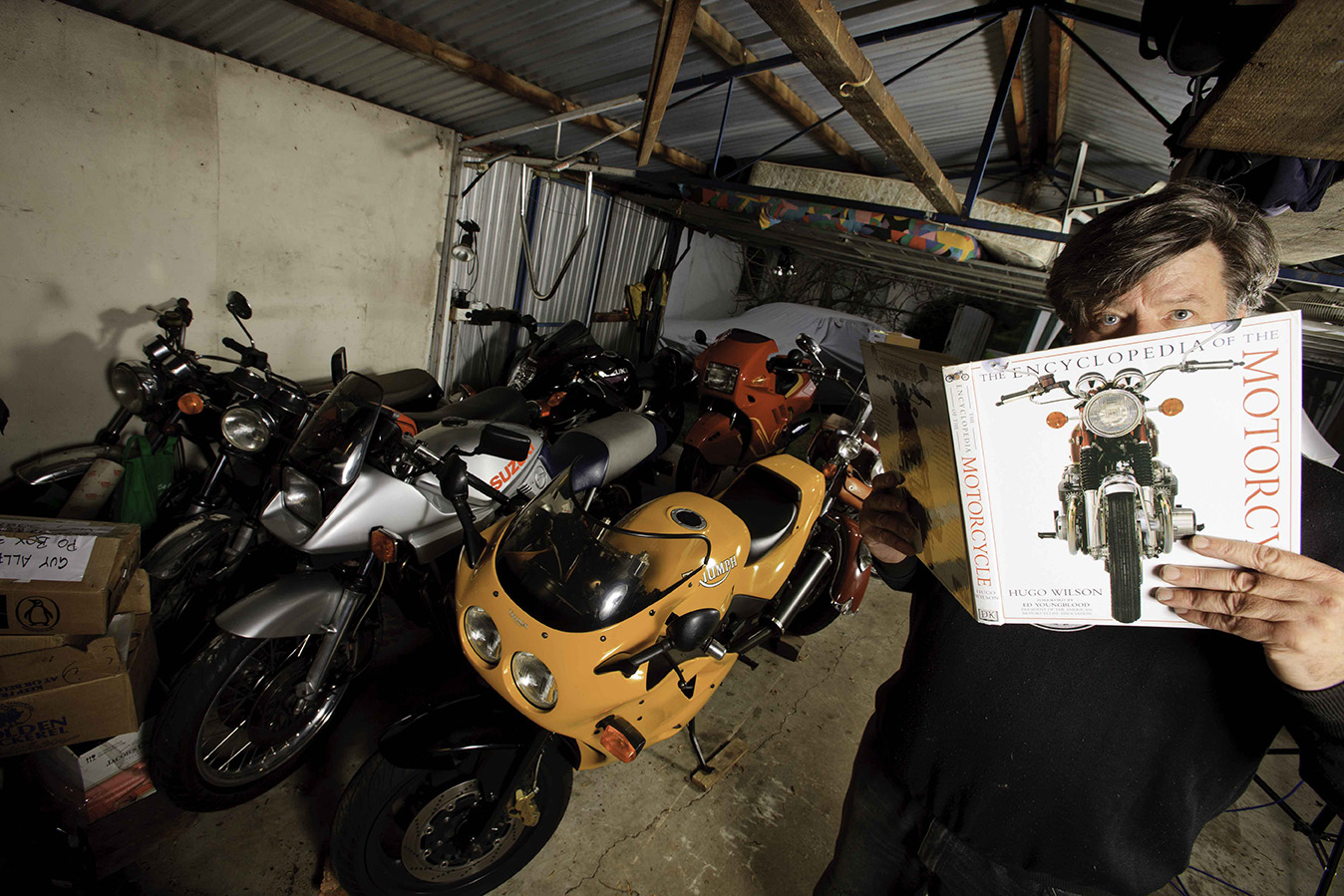
Storing
your motorcycles...how can you minimise damage when
you store or keep a bike?
How do you store a bike? Of all the questions I've been
asked over time, this is the one I most dread. There is no
correct answer and even the nearly-right ones will vary
according to what you intend, for how long and where you
are.
The premise is this: reader Bob/Roberta gets in touch and
says, "You have lots of bikes, so how do you store them?"
Fair question. This assumes I'm an expert, which is up for
debate, but here goes...
In my situation, all the motorcycles are kept active –
aside from mechanical issues that lay them up for a while.
There are 17 in the fleet at the moment (one of which I've
had for 30-plus years, a few over 20 and several over 10)
and are in roughly four groups:
1. The collectibles that I try to keep as tidy as
possible (for example my Triumph Daytona
Super III or Norton Commando
MkIII);
2. A couple of unrestored toys I keep in survivor shape
(for example my Yamaha SR500);
3. A few sports-tourers and tourers that are in very good
but not perfect condition (for example my Suzuki Hayabusa
and Honda Valkyrie
Interstate);
4. And a sacrificial anode, in this case the BMW R1150GS,
which is my knock-about option.
Regardless of their condition, the overall aim is to stop
or more realistically slow down the inevitable degradation
that comes with time.
In my case you can ride only one at a time, which means
some can sit for anything up to a few months between
outings. So we'll start with short-term storage.
In an ideal world, you'd have a climate-controlled shed
with good air-filtration. Nice thought...I don't. I do
however have a mix of sheds and shelters.
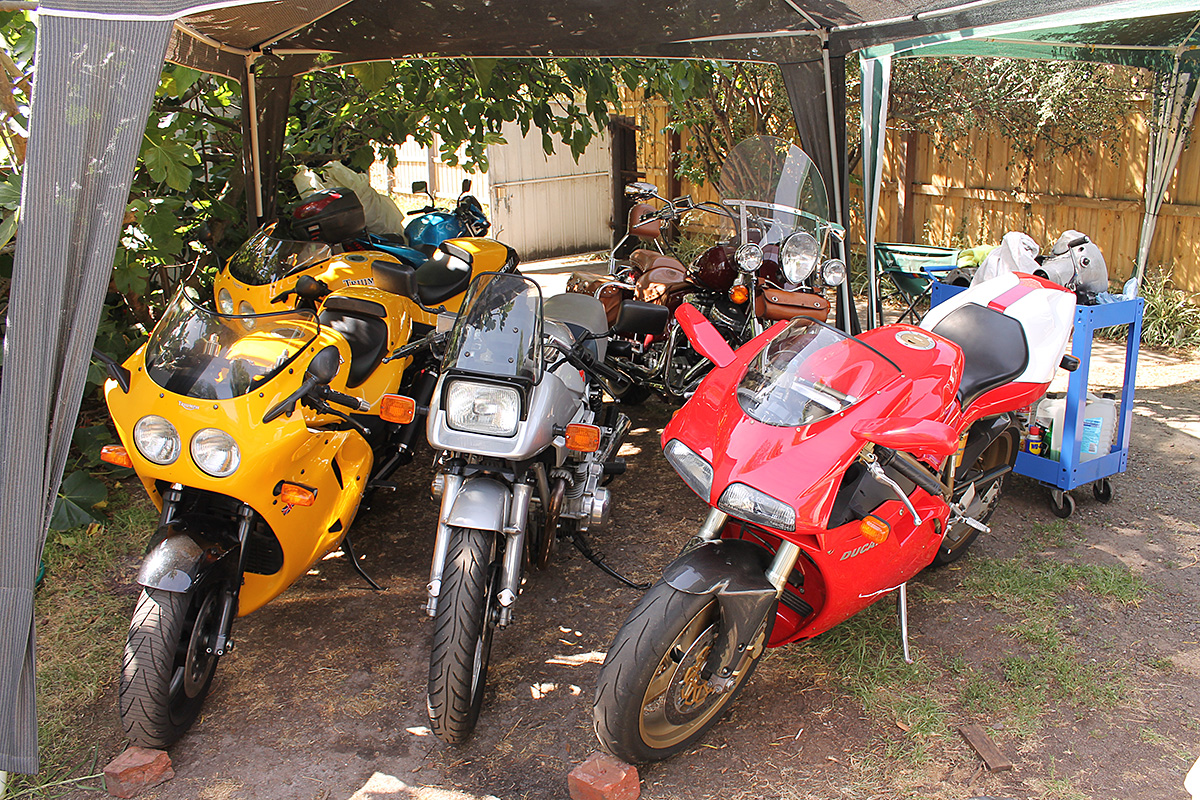
Short term
Here's what I do:
Nothing is put away dirty – after every ride, the bike is
allowed to cool down, given a quick clean-up if it needs
it and then covered. If there are areas prone to corrosion
(and I remember!), they'll get a spray of WD40/CRC or
similar. Ditto for plastics.
Those compounds act as a decent corrosion inhibitor on
metal and work well with plastics/vinyl. If the bike has
wire-spoked wheels, I'll sometimes go to the trouble of
drowning a rag in spray and then wipe each spoke with it.
For paint, believe it or not Mr Sheen wax (yep, the
domestic version) is a quick and easy go-to. One proviso:
If you ever go to repaint a tank or similar that's been
treated with Mr Sheen, extra care needs to be taken when
stripping it before respraying, as it can work its way
quite deep into the material.
Dust covers on everything – and they need to be able to 'breathe'. The dust itself isn't necessarily harmful, but combined with moisture is bad news as it builds up over time.
When the opportunity comes up, I replace batteries with
Lithium. Frankly, lead-acid is a waste of time these days.
The performance is ordinary and I certainly won't buy an
unsealed battery any more.
I prefer Lithium for the longer ability to hold charge,
superior tendency to throw everything at the starter from
the first hit and quick recharge times. However AGM is
probably better bang for your buck if price is an issue,
given it seems to have longevity and charge-holding
abilities that go close to its more expensive cousin.
If the bike is still running an earlier sealed type, I'll
usually have it on a trickle-charger.
Fuel tanks are kept full, or close – 95 from BP (no
sponsorship in case you were wondering) is the preferred
juice for pretty much everything. The brand comes on the
advice of a long-term automotive fuel systems repairer.
Any fuel with an ethanol component is avoided.
Oil is changed yearly (assuming low miles) – strictly
mineral for the older machinery and synthetic for those
that have it specified. Penrite is my default brand. The
company has a pretty good
product selector here. (And no, this is not a paid
referral.)
Brake/clutch fluid is changed or freshened-up yearly. I
have a short-cut I use every second year, which is to use
a syringe to empty the reservoir and throw in fresh fluid,
rather than a full change – something I keep a log on.
(And yes, it's not perfect. But reality says you need to
cut down the workload a little...)
When you take them for a run, it needs to be 5-10km as a
reasonable stretch. However that inevitably needs to be
punctuated every few short runs with a proper longer
gallop of an hour or better, preferably including a decent
highway section.
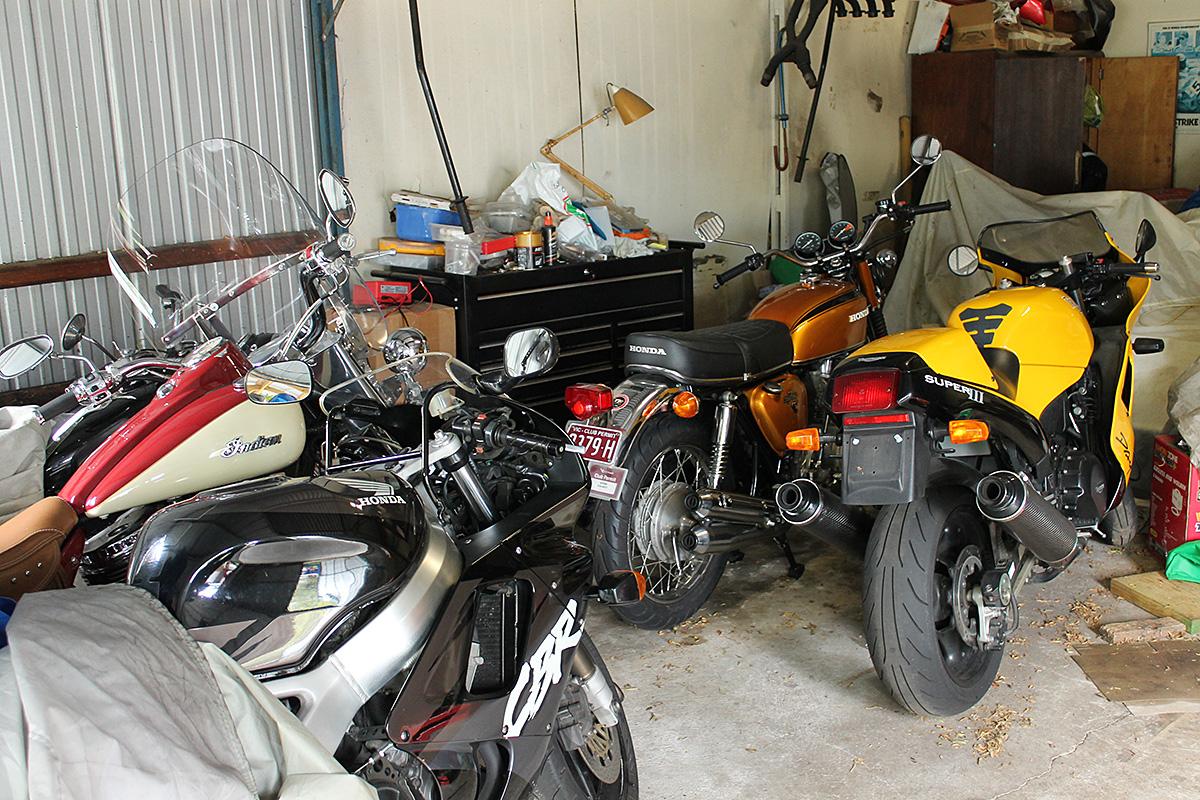
Medium Term
What's medium term? I'd say six months to a year-ish
without being ridden. In that case, before you park it,
fresh fluids all round, which includes hydraulics
(brakes/clutch), and make sure the fuel tank is full, with
a dose of fuel stabiliser. Drain the carburettors if it
has them.
Plan on changing the fluids when you return to it.
Remove the battery, and pump up the tyres to around 40psi. Put it on the centrestand or paddock stand.
Pretty much all the surfaces (avoid the tyres and brake
discs!) will benefit from a mist of WD40/CRC or similar,
then cover it.
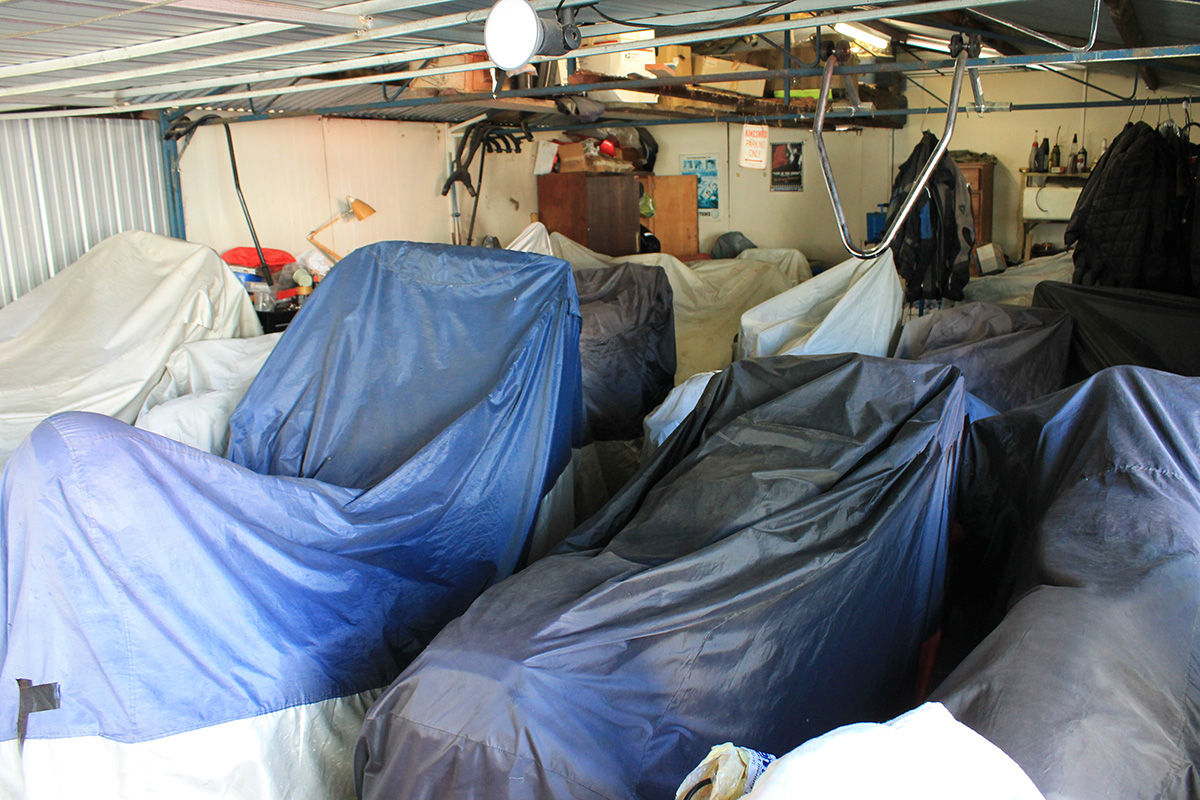
Long Term
Let's say two years-plus. Frankly I wouldn't do it unless
it is something that has sentimental value, looks
fantastic in the lounge room, or you're confident is going
to grow significantly in value. Otherwise, sell it, put
the money aside and plan on buying a replacement when
you're ready.
If you are keeping it, ditch all the fluids and give it a
good clean. Why drop the fluids? They change consistency
and can 'eat' your motorcycle from the inside out over
time.
When it comes to petrol, here's a quote from our feature
on reviving a Yamaha GTS1000 which had been stored for 15
years:
"So
what happens when you leave unleaded fuel sitting in a
complex motorcycle for 15 years or so? It essentially
eats everything it can weasel its way into. We ended up
having to ditch the fuel tank, the lines, the pump, the
injectors…pretty much everything between the filler on
the tank and the cylinder head." See the full
story here.
A spray of WD40/CRC is worthwhile (assuming you're away
for the duration), as is a centrestand, pumped-up tyres
etc.
This is where environment is absolutely critical. A shed
or under-house space that's out of the rain but has a damp
atmosphere will still rot your bike at an appalling rate.
It needs to be properly dry.
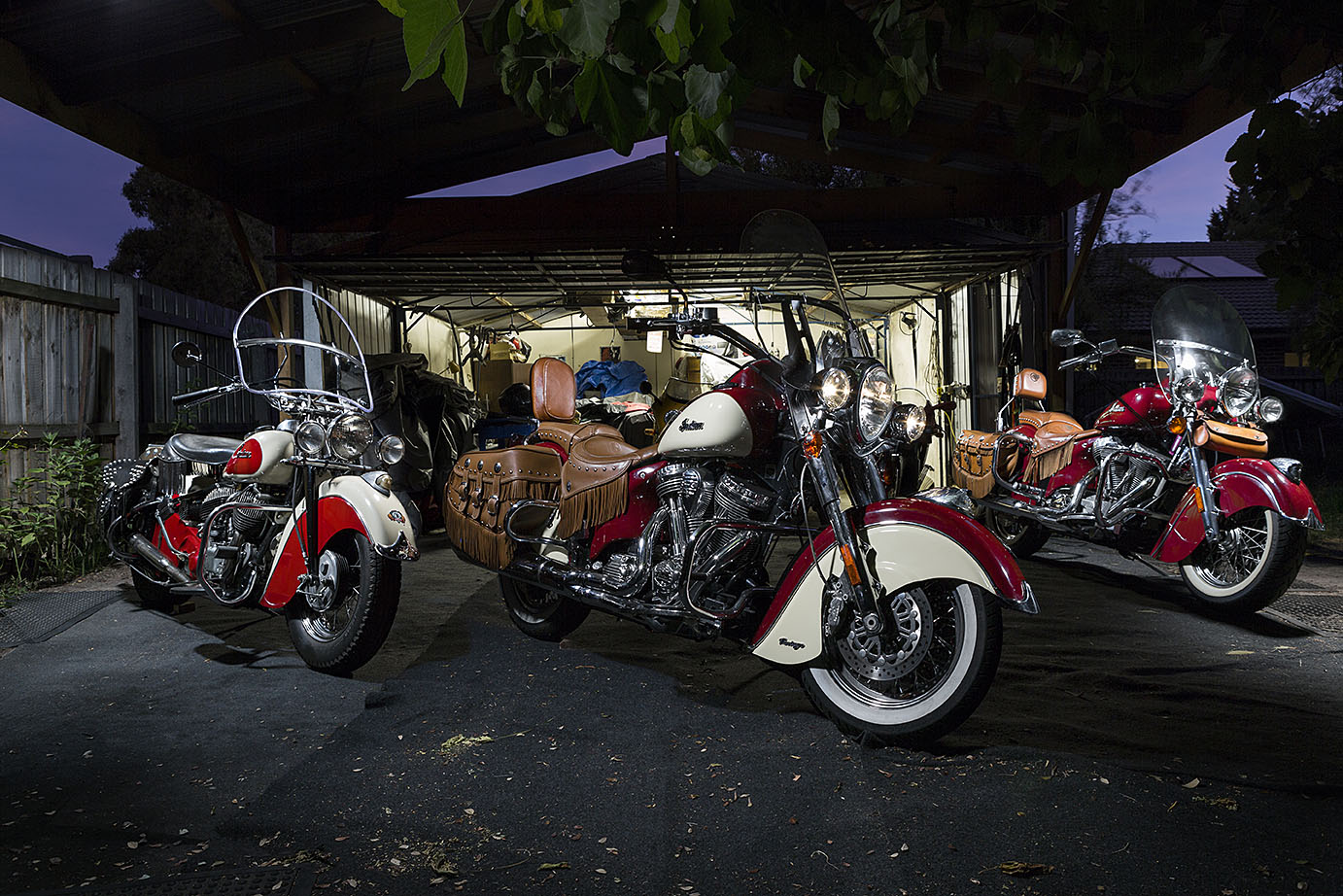
Alternatives
Let's say you need to wander off and leave the bike
for a while, but it's to be kept as a runner. If you have
a friend with the skills, knowledge and time, you might
consider leaving it with them for the odd spin around the
block. In most cases, a 5-10km ride every few weeks will
suffice.
Or, in the case of long-term non-runner, is the bike of
interest to a local museum or shop as a static display? If
it's very valuable, there are professional vehicle storage
companies out there.
Best options?
Clearly there will be variations and subtleties involved in all of this, depending on the motorcycle(s) and your situation.
For some, it may come down to a decision about whether you're keeping the bike as a runner or as a museum piece. That's probably the most important decision of all.
In the latter case, a clean and dry environment with no fluids in the machine will be the way to go. Even that can involve some minimal care to keep the thing tidy.
If it's to be kept as a runner, you will inevitably be making compromises. In that situation, just keep in mind that it is more difficult to slow down the march of time. But that's okay, as you get to enjoy it along the way...
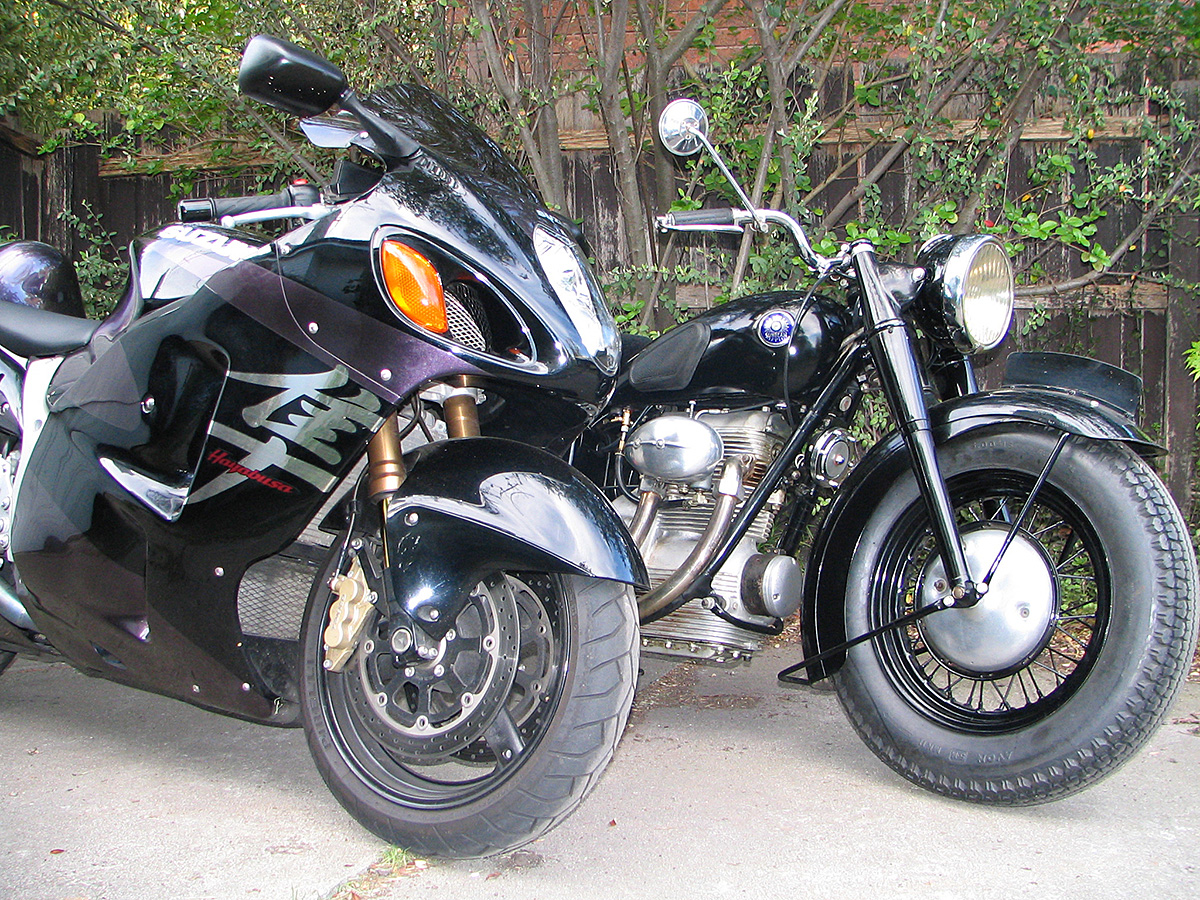
Above: Our 2003 Suzuki
Hayabusa and 1947 Sunbeam S7
-------------------------------------------------
Produced by AllMoto abn 61 400 694 722
Privacy: we do not collect cookies or any other data.

Archives
Contact





